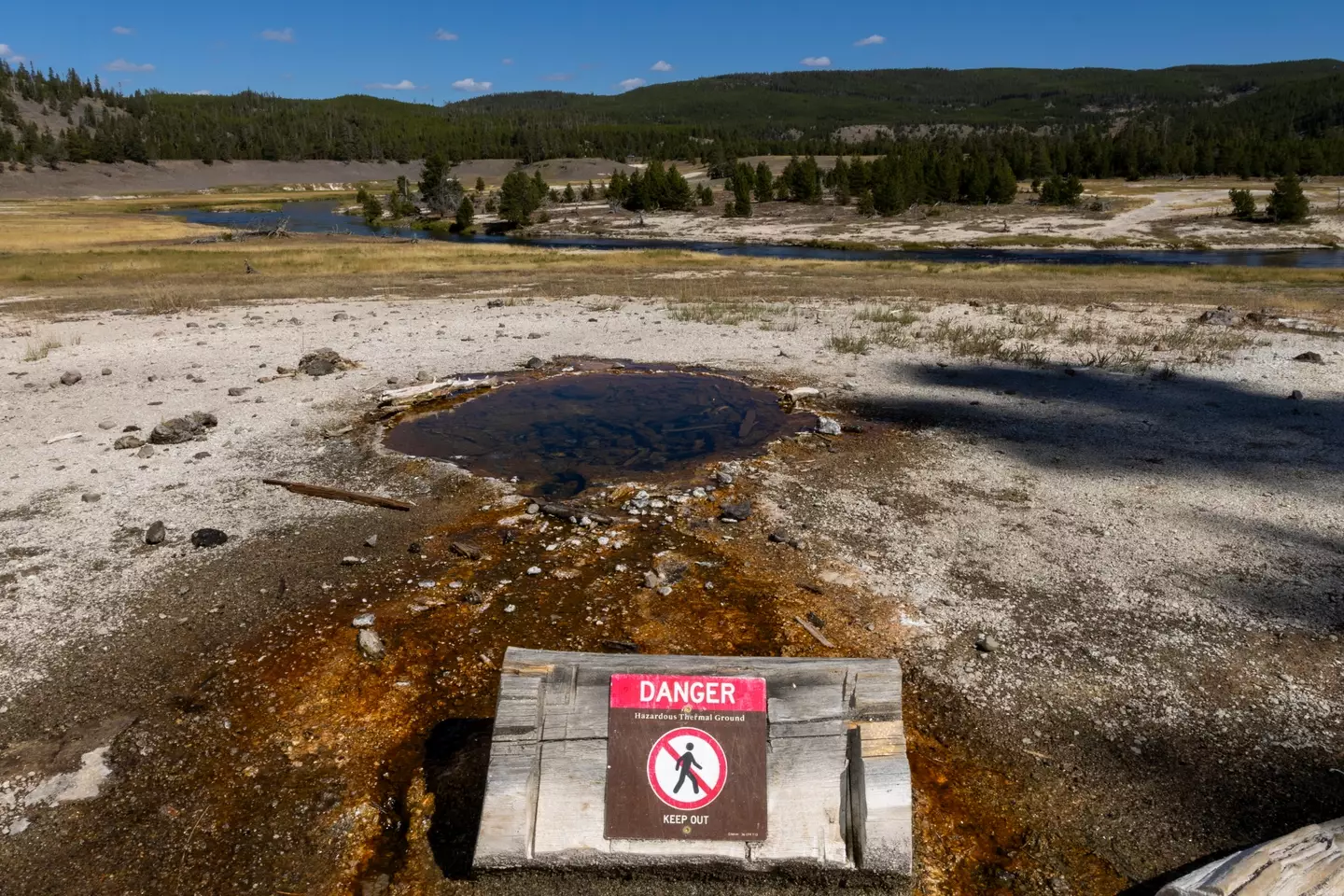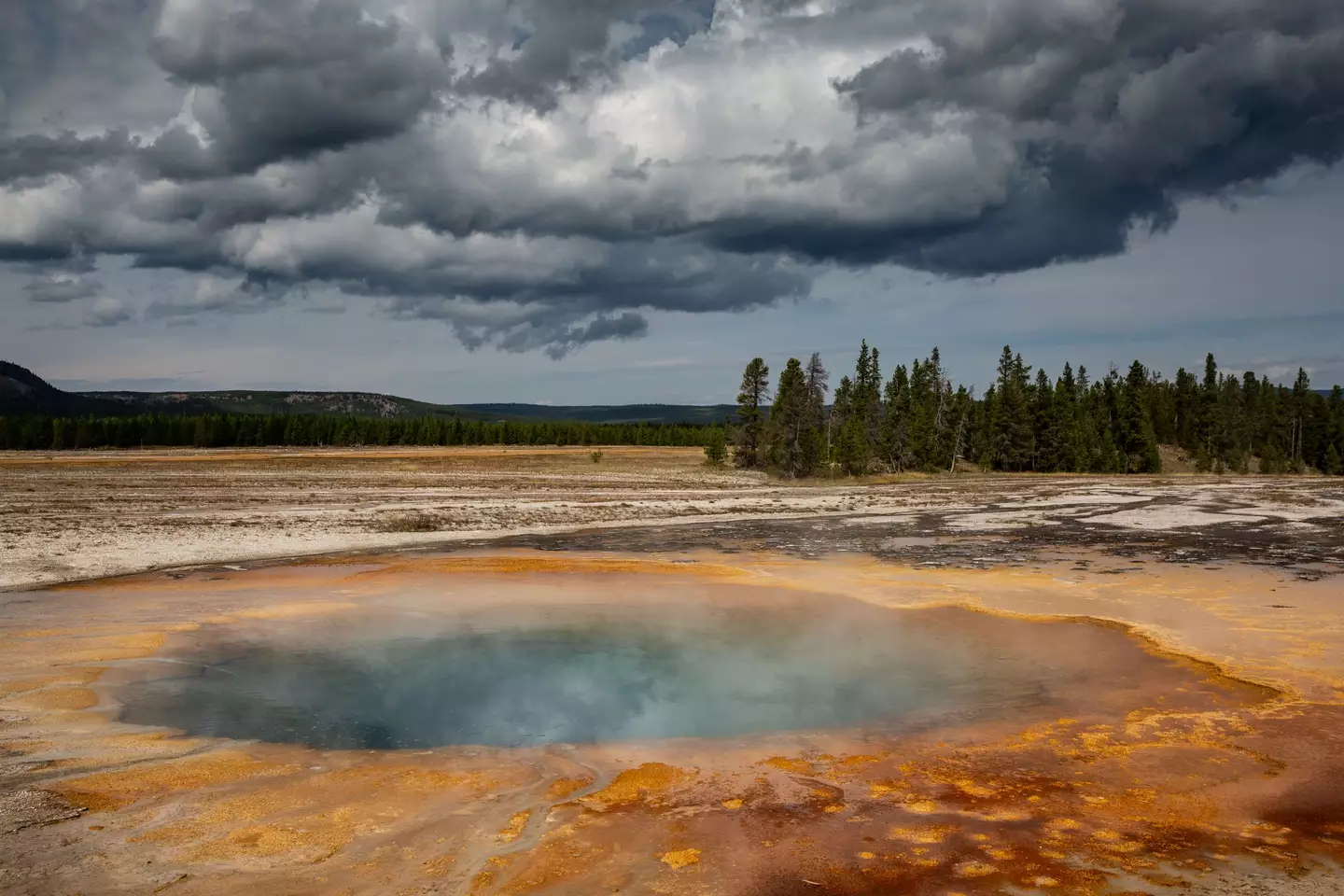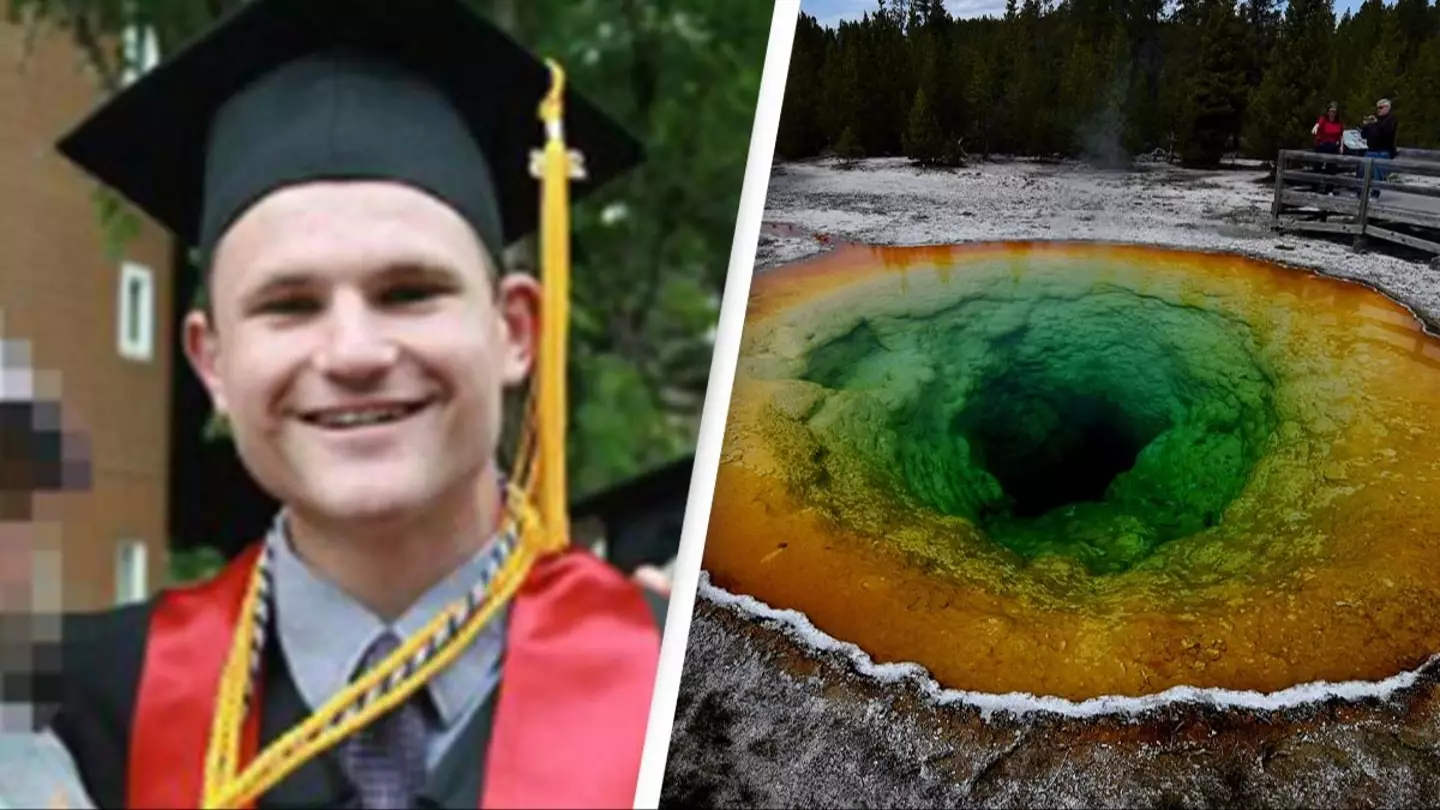A man tragically dissolved after attempting to ‘hot pot’ in a volcanic spring at Yellowstone National Park.
Colin Scott visited the park, known for its geothermal features, with the intention of ‘hot potting’—briefly immersing in a hot spring before quickly exiting.
Yellowstone is situated atop a super-volcano, resulting in numerous hot springs due to the heat from the subterranean magma chamber.
This heat causes water to rise to the surface, enriched with minerals from the volcanic activity below.
Despite the perceived health benefits of volcanic minerals, these springs pose significant dangers, a fact illustrated by Colin’s unfortunate experience.

While testing the water at a hot spring, the 23-year-old slipped and fell in, unable to escape.
Sadly, Colin lost his life in the thermal pool.
Park rangers responded to the incident but could not immediately recover his body due to an incoming thunderstorm, forcing them to temporarily withdraw.
Upon their return the following day, Colin’s body was missing, with only his sandals and wallet found in the volcanic water.
While wildlife interference was a consideration, the rangers believed there was another explanation.
Deputy Chief Ranger Lorant Veress documented the incident, providing insight into Colin’s body’s disappearance.

“In a very short order, there was a significant amount of dissolving,” Veress reported.
The temperature of these geothermal features can reach up to 199F (93C) at the surface, increasing toward the magma below.
This, combined with volcanic chemicals, creates an environment highly detrimental to human tissue.
Only a few specially adapted bacteria can thrive in such conditions.
Since 2010, Yellowstone has recorded approximately 52 fatalities, according to Outforia.
This is, however, fewer than the 92 deaths recorded in the Great Smoky Mountains in Tennessee.

